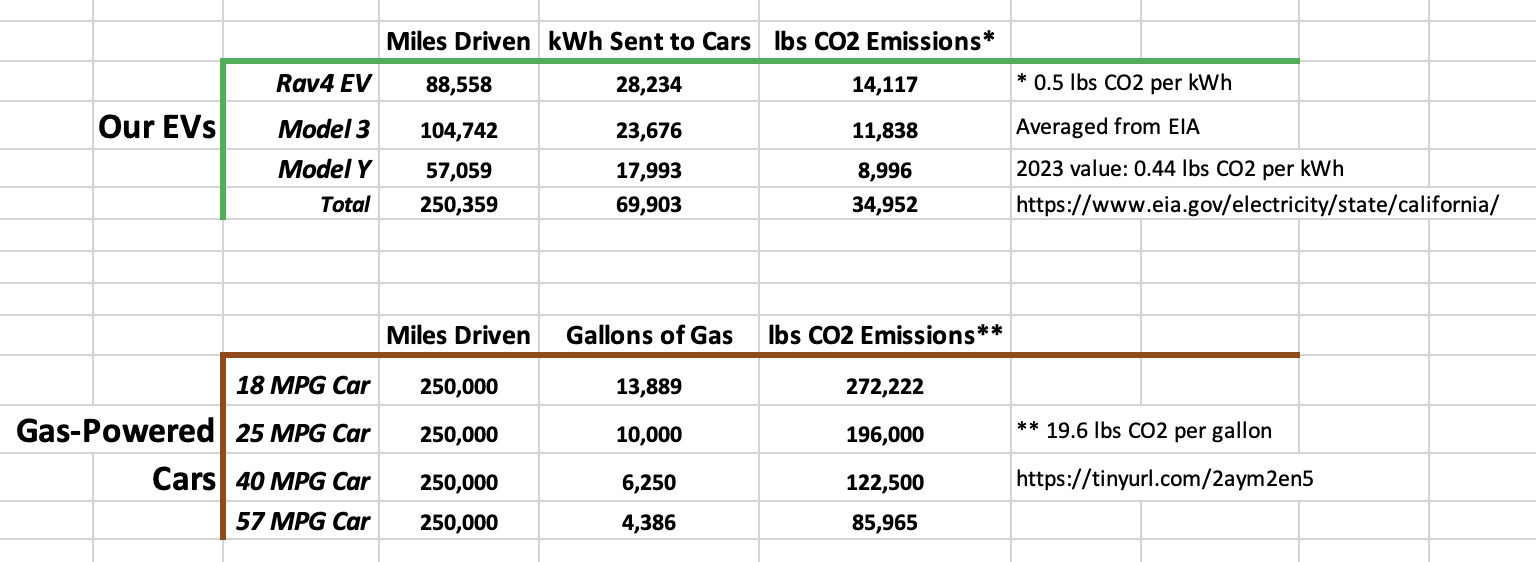October 2025. California.
From 2013 to 2018 our family transitioned from two gas-powered cars to two battery-powered EVs. Since 2013 we’ve driven a quarter million miles in our EVs – that’s 250,000 electric miles over the past 12 years. Here’s a quick breakdown on how we use our EVs, money saved, and reduced emissions.
We drive 39 miles a day. We are pretty much average drivers for the US, logging about 39 miles a day in our EVs. Again, these are average numbers.
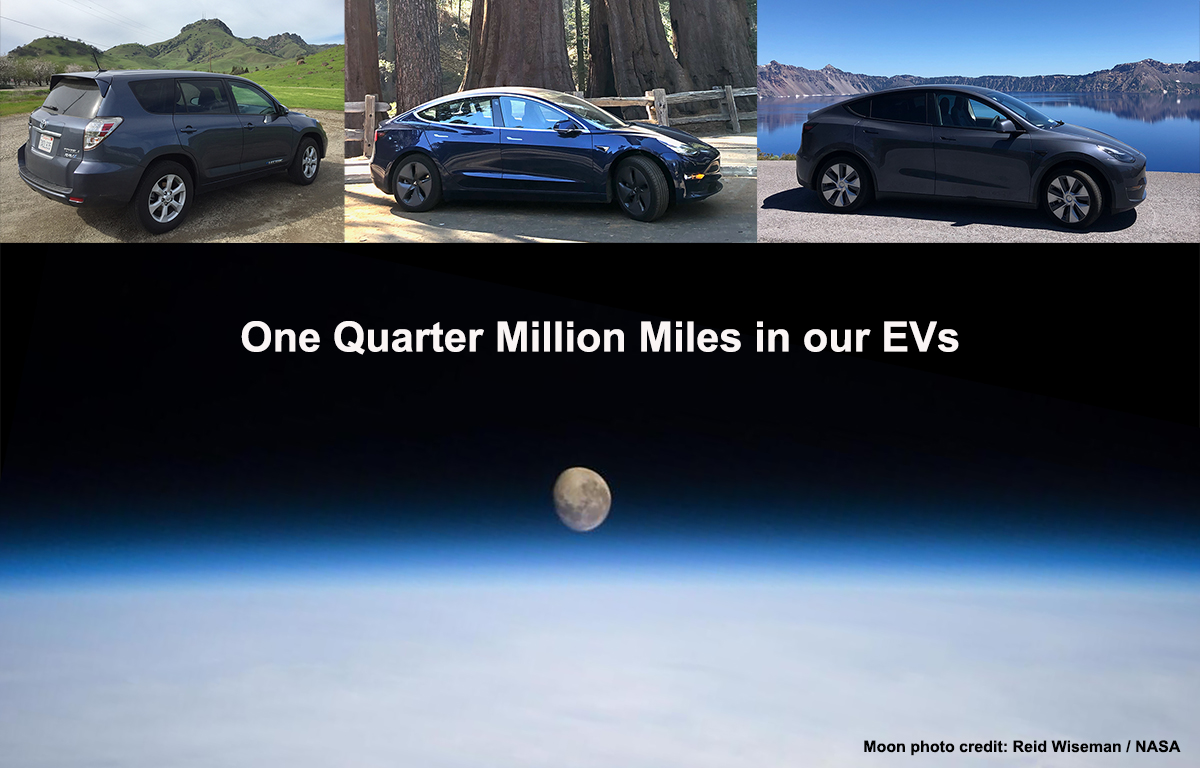
96% of the time we drive locally. The bulk of our driving is commuting to work, driving the kids to school / practice / games, and driving around town for chores. These trips take up 96% of our driving time.
4% of the time we drive our cars on vacations. About 2 weeks each year we drive our cars on summer vacations and long weekends out of town. This represents only 4% of our time, but adds up to more than 15% of our mileage.
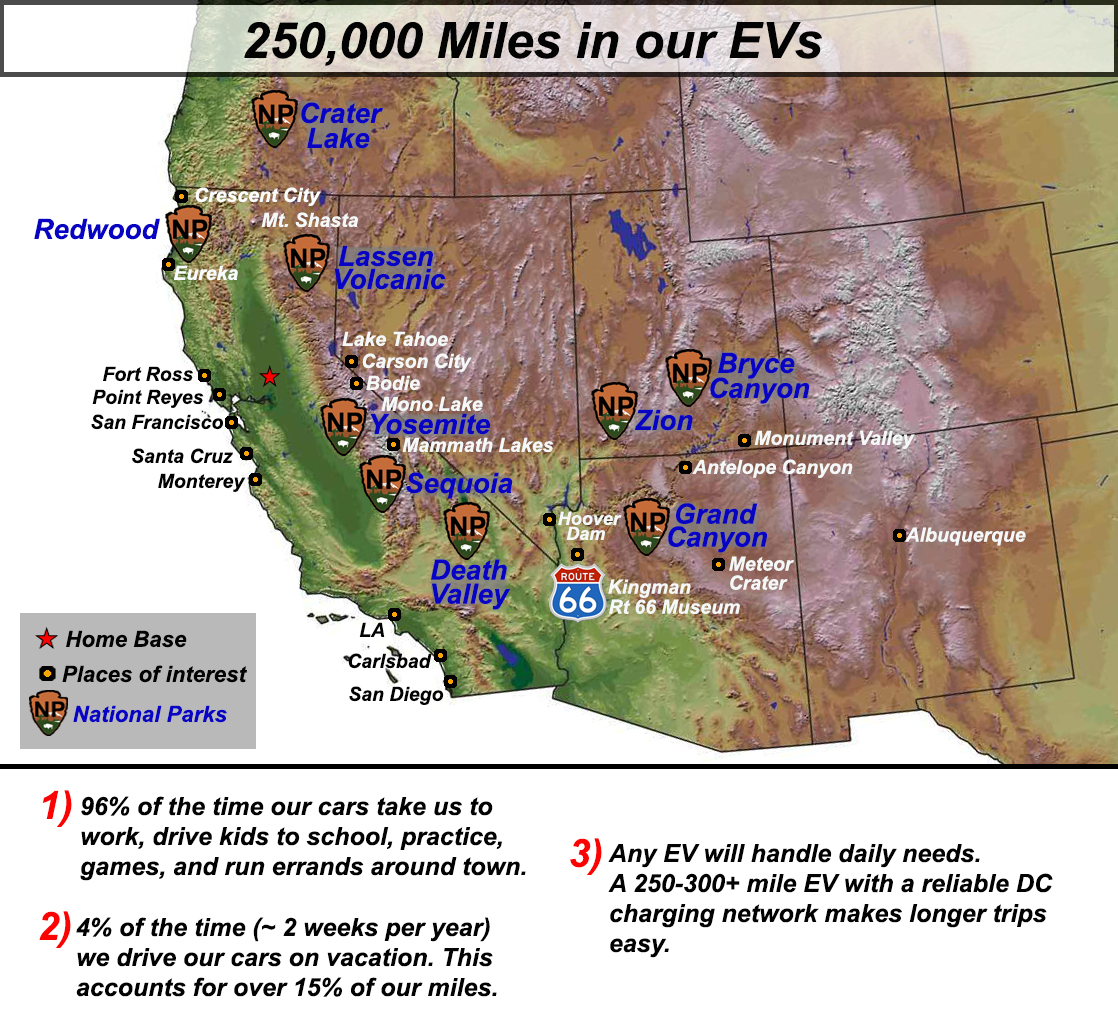
Our EVs take us to memorable places. Out of town trips included visits to National Parks, state parks, campgrounds, drives along the California coast, countless trips to the Bay Area, and other places of interest throughout California, Oregon, Nevada, Arizona, Utah, and New Mexico. We haven’t yet gone cross country in our EVs, but we get around a bit.
EVs don’t restrict travel. A reliable and rapid DC charging network has allowed us to go to all of the places we’ve wanted to visit without cramping our style. Charging an EV doesn’t slow you down. 15-20 minute charging stops every 150-200 miles gives us a chance to stretch our legs, get a drink, a bite to eat, and have the kids burn off some energy. We’ve driven over 800 miles a day with our kids and without problems.
We saved money on fueling costs. We traded in a Toyota Corolla for the Rav4 EV in 2013, traded our Toyota Prius for a Model 3 in 2018, and then replaced the Rav with a Model Y in 2020. The combination of switching to cheaper electricity to power more efficient vehicles, and installing rooftop solar saved us money.

Rooftop solar offsets our electricity use and saves money. In 2017 we paid $16,700 to install a 6.2 kW rooftop solar power system. This was kind of like prepaying for gas, but way better. Our rooftop system offsets all of the electricity we use for our home and for charging one EV. The money we saved by 1) not buying gas; 2) powering our cars with electricity since 2013; and 3) not paying for home electricity since 2017 = $23,000. Subtract the cost of installing solar, and the cost of charging our cars on road trips and we have net savings of $4,100 over 12 years.
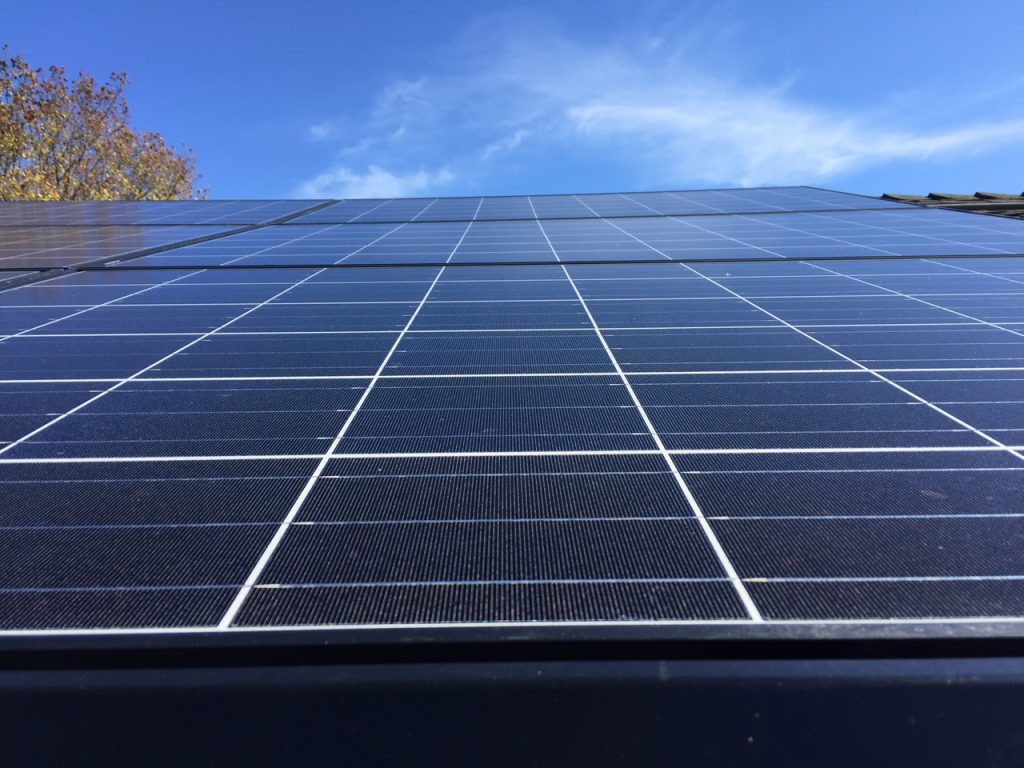
The money we saved paid for our rooftop solar system – and the solar panels continue generating power for our home, our EVs, and for the grid. (For those interested, here’s the numbers on money saved).
EVs reduce CO2 emissions. The graph below demonstrates the large difference in emissions produced by driving 250,000 miles in gas powered cars compared to our EVs. A large SUV releases over 1 pound of CO2 into the atmosphere for every mile driven. In contrast, our EVs released 0.14 pounds per mile driven. Over 12 years we reduced our carbon emissions from driving EVs by nearly 100,000 lbs compared to the gas-powered cars we used to drive – and over 200,000 lbs compared to large SUVs. The reduced emissions from just one family would be even more significant if applied to a large portion of cars on the road in the US (almost 300 million).1
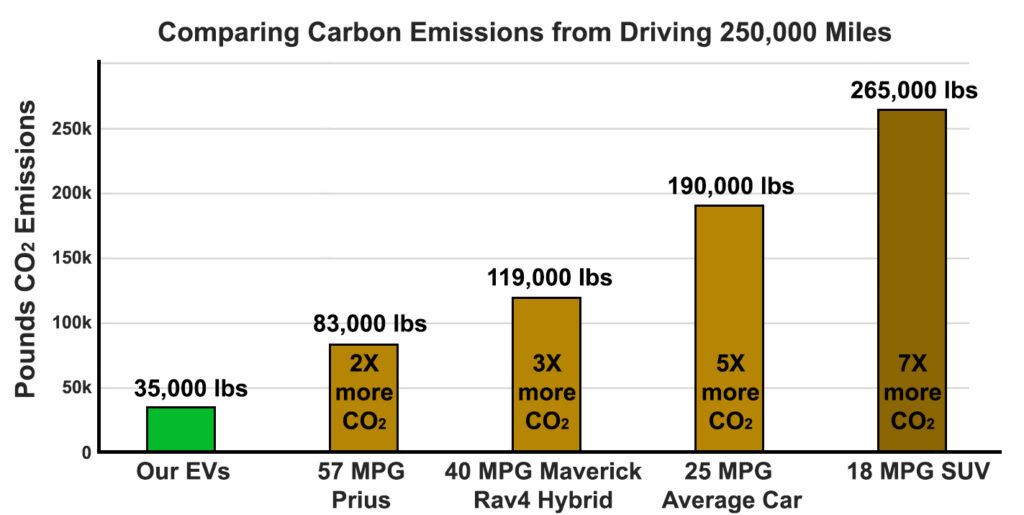
Carry that weight. Here’s another way of thinking about the pollution we make by driving. Imagine if you had to carry the weight of CO2 you produce from daily driving. Each day the average person in the US drives about 35 miles. A large 18 MPG SUV releases over 1 pound of CO2 per mile, which adds up to 38+ pounds. In contrast, our EVs release less than 5 pounds of CO2 per day. 38 pounds may not sound huge, but imagine carrying that weight in a backpack all day long, for every day you drive. That weight on your back is what large gas-powered vehicles pump into the atmosphere every day.
Note that five pounds of carbon emissions per day from an EV is not zero, but it’s an improvement. Increasing renewable sources to power our grid will drive that number down even lower.
Final point. The CO2 we pump into the atmosphere doesn’t just float away. The atmosphere is large but finite. In the US we pump several billion pounds of CO2 into the atmosphere every day just from personal transportation. We can change that.

Footnotes:
- – For calculating emissions data from our EVs, I kept track of how many kWh our EVs report using from the battery pack, how much electricity was required to get those kWhs into the pack, and CO2 emissions from generating electricity in the states where we’ve charged our cars – most of our charging was done in CA. The Department of Energy’s Energy Information Administration publishes emissions data as pounds of CO2 emissions released per MWh of electricity generated in each state. The EIA lists the data by state, by year, and includes other emissions produced by electricity generation like sulfur dioxide and nitrogen oxide. I focused on CO2 since it is a potent heat trapping gas, and is useful for comparing EV emissions with those from gas powered cars.
– Calculating CO2 emissions from gas powered cars is easy since each gallon of gas burned releases 19.6 pounds of CO2, so miles driven divided by MPG = gallons of gas burned. ↩︎
